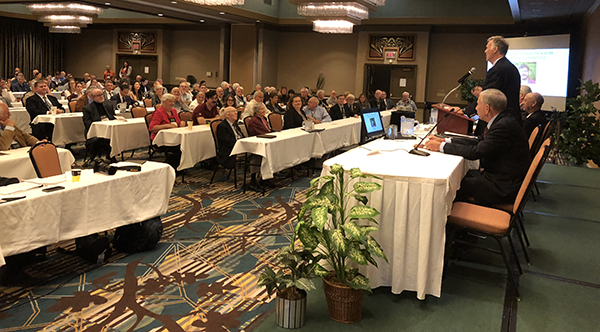Current News Archive
Wayne M. Glines, CHP
From 1 to 3 October 2018, more than 200 scientists, regulators, nuclear technologists, and interested parties from around the world gathered in Pasco, Washington, for the Joint American Nuclear Society (ANS) and Health Physics Society (HPS) Conference: Applicability of Radiation-Response Models to Low-Dose Protection Standards. The conference addressed some of the most fundamental questions in radiation protection: (1) how much exposure is too much and (2) how to avoid too much exposure AND still use the benefits of radioactivity and ionizing radiation. In addition, this conference posed the question of what is needed to move forward both in the area of the science of radiation effects, e.g., understanding the risk(s) of radiation in the low-dose region (<10 mSv), and in communicating this science to the public. This conference included nine plenary sessions, seven panel discussions, two luncheon speakers, an invited evening banquet speaker, and a poster session with over 40 presentations.
The proceedings of this conference are now being published in a special issue of the Health Physics Journal due out in March 2020. These proceedings provide abstracts for all presentations given during each of the plenary sessions, panel discussions, and speakers. For all plenary sessions and panel discussions, the abstracts are followed by a discussion of the salient observations, discussions, and conclusions made during that session. In addition, appendices provide (1) a listing of all conference presenters and panelists, (2) a listing of all conference participants, and (3) a listing of all poster presentations.
Efforts were made to ensure that the interdisciplinary composition of the participants was well represented in all relevant sessions. Participants encompassed a wide range of disciplines, including epidemiology, systems biology, cell and molecular biology, biochemistry, biophysics, health physics, mathematics, modeling, legal socioeconomics, medical practitioners, regulators, as well as lay people directly impacted by radiation protection decisions, e.g., evacuations following Fukushima.
After three days of presentations and extensive discussions, there were several areas of near consensus, while in other areas, there remained a wide range of views supported by different scientific bases. The areas of near consensus included:
- Fear of radiation is a serious problem, and lack of communication between the scientific community and stakeholders seems to be a major contributor to that fear.
- There is a need for carefully directed, focused research to provide data on the underlying science of low-dose radiation effects in humans and to help address regulatory concerns.
- There is a gross inconsistency related to the setting of protection standards in light of the variable background levels of radiation.
- Medical uses of radiation provide great benefit and should not be refused if the exposure is justified and the exam recommended by medical experts.
- There is a lack of young people entering radiation protection disciplines.
Additional information from the conference beyond what is presented in these proceedings may be found on the conference website. This website includes copies of most of the conference presentations; biographies of many of the presenters; links to videos for all of the plenary sessions, panel discussions, and invited speakers; and other supplemental information.

Conference General Chair Dr. Alan Waltar addressing attendees at the welcoming session. Photo courtesy of Dan Strom




